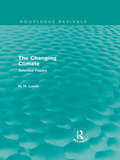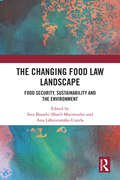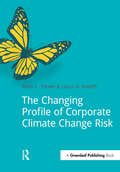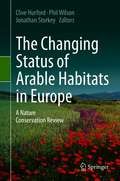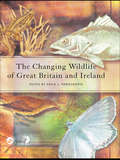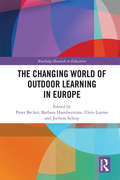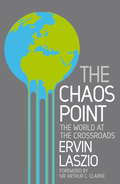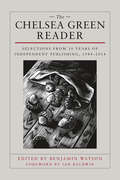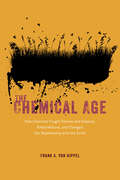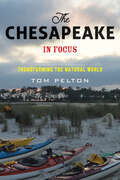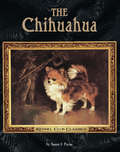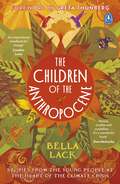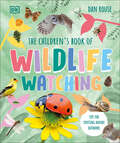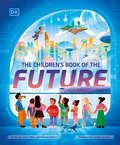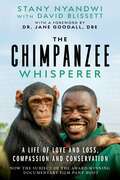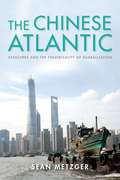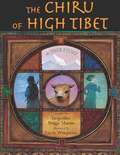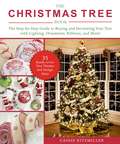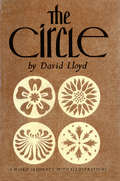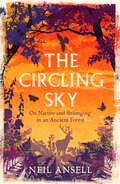- Table View
- List View
The Changing Climate: Selected Papers (Routledge Revivals: A History of Climate Changes)
by H. H. LambFirst published in 1966 these collected papers, written by the distinguished and visionary climatologist Hubert H. Lamb, describe how climates come about and give a history of climatic changes from the last ice-age to the 1960s.
The Changing Food Law Landscape: Food Security, Sustainability and the Environment
by Anu Lähteenmäki-Uutela Siva Barathi Sharl MarimuthuThis book analyses the current debates within food system governance, covering different aspects of food systems (from production to consumption) as well as different fields of law (from human rights law to environmental law). Recognizing that the law, in interacting with multiple disciplines, plays a major role in setting binding targets for sustainable innovation and business transformation, it brings together contributors from a wide range of professions, including agriculture, law, and business to examine the dimensions of food systems and the challenges in transforming them.The contributors to this book examine some of the most significant aspects of food law and regulation, including the effects of global warming, intellectual property rights, and human rights, as well as local and international viewpoints on food safety, information sharing, and systems transformation. They consider the history and present challenges of food production, the different approaches to addressing the issues faced, and the factors of human biology, psychology, cultural norms and religion that shape our food environments. The analysis of knowledge, values and institutions provides a holistic analysis of human food systems. Topics such as regenerative agriculture, novel and alternative foods, and health-enhancing foods are also covered.With its interdisciplinary approach, this book will interest researchers in agricultural law, food policy, environmental law, transdisciplinary food studies, and food science.
The Changing Land: Module F
by Leonard Bernstein Martin Schachter Alan Winkler Stanley WolfeIn this book, you will use a variety of science process skills to understand the facts and theories in earth science.
The Changing Profile of Corporate Climate Change Risk (Doshorts Ser.)
by Mark Trexler Laura KosloffThis book will help business executives to (1) rethink their perceptions of climate risk (2) evaluate whether their company is effectively positioned, and (3) make informed and prudent business decisions about climate change risk in an environment rife with policy uncertainty.Business risk associated with climate change is commonly assumed to be primarily policy driven. Many companies internalize the current stalemate over global climate policy into a perception that climate risk is no longer a critical issue. Business climate risks, however, include: Operational and Supply Chain (Physical) Risk, Brand Risk, Market-driven Structural Risk, Liability Risk.As national and global policy to materially reduce climate change is delayed, it is business-prudent to assume that the level of climate risk is increasing. Even if policy risk might seem lower today than a few years ago, political will can change quickly. Should physical impacts of climate change manifest in dramatic ways, for example, draconian climate policy is likely to follow quickly. These conditions create a complex and shifting business risk environment, and most companies either overlook or substantially underestimate key climate risks. How many companies, for example, are positioned for material climate change outcomes, whether physical or regulatory? Companies with little climate change exposure may not face much downside risk from taking a wait-and-see approach. For those with greater exposure, being "too late" to respond will mean costs and competitive impacts that could have been avoided. Being "too early," however, can mean being penalized later for actions that reduce a company’s emissions today, or competitive disadvantage from getting too far out in front of competitors.
The Changing Status of Arable Habitats in Europe: A Nature Conservation Review
by Clive Hurford Phil Wilson Jonathan StorkeyThis edited volume documents the current nature conservation status of arable habitats in Europe. Arable farming systems have evolved in the European landscape over more than ten thousand years and now occupy nearly 30% of the European land area. They support species that have life cycles closely synchronised with traditional cereal growing, many of which have experienced massive declines throughout Europe. For example, in Britain, of the 100 plant species exhibiting the greatest declines in the latter half of the 20th century, 47 were typical of arable land. Despite this the habitat and many of the species associated with it remains unprotected across much of Europe. The 22 chapters cover a range of topics, including: · Regional accounts describing the impact of changing agricultural practices on the arable flora;· The results of research and surveillance projects on the soil organisms, bryophyte flora, invertebrate fauna and pollinators of arable habitats;· The potential for designing multifunctional and resilient agricultural landscapes; The use of ex situ conservation to aid the reintroduction of rare arable plants;· Case studies illustrating how changing agricultural practices have impacted on bird populations in Europe; · The roles of remote sensing in monitoring agricultural systems; · How agri-environment schemes can help restore the biodiversity in arable habitats; and · A look forward at ways to help ensure the future security of the species associated with arable habitats. It is clear that the biodiversity of arable land throughout Europe has undergone major changes, particularly during the second half of the 20th century, and that these changes are continuing into the 21st century. We need to develop a deeper appreciation of farmland wildlife and its integration into farming systems to ensure its future security in a world where value is increasingly expressed in terms of material profit. This book is particularly relevant to practitioners, policy-makers and managers working in the fields of nature conservation, agri-environment schemes and land management, and to researchers working in the fields of conservation biology, terrestrial ecology, nature conservation, applied ecology, biodiversity, agriculture, agricultural ethics and environmental studies.
The Changing Wildlife of Great Britain and Ireland (Systematics Association Special Volumes Ser.)
by David L. HawksworthPeriodic comprehensive overviews of the status of the diverse organisms that make up wildlife are essential to determining trends, threats and future prospects. Just over 25 years ago, leading authorities on different kinds of wildlife came together to prepare an assessment of their status of a wide range of organisms in Great Britain and Ireland i
The Changing World of Outdoor Learning in Europe (Routledge Research in Education)
by Barbara Humberstone Peter Becker Chris Loynes Jochem SchirpThe Changing World of Outdoor Learning in Europe sets out to provide a comprehensive analysis of the economical and political changes that have occurred in European outdoor culture in the preceding two decades, from a diverse range of perspectives including institutional, theoretical, national and educational views. The book looks at how outdoor education has been transformed into an increasingly global field where established and influenced practices have been introduced into modernising and democratising nations. With contributions from the members of the board of the European Institute of Outdoor Adventure Eduation and Experiential Learning and representatives of the networks that stand behind it, this unique book provides thorough factual analyses and examinations of outdoor learning that have never been presented before. The book contains contributions from across Europe, with authors from the UK, Germany, Finland, Sweden, Slovenia, Poland, Norway and the Czech Republic. Chapters within the volume by non - European authors provide another perspective on the European story in a wider context. As a whole, the book will stimulate the ongoing debate about the nature, function and organisation of outdoor education around the globe. The Changing World of Outdoor Learning in Europe will be of great interest to academics, researchers and postgraduate students in the fields of outdoor education, leadership and recreation; and outdoor, sport, environmental and leisure studies. It should also be essential reading for those involved in outdoor organisations in Europe and worldwide.
The Chaos Point: The world at the crossroads
by Ervin LaszloWe have a choice: Breakdown or Breakthrough. In THE CHAOS POINT revered author and systems theorist Ervin Laszlo tells us that we are at a critical juncture in history, a 'decision-window' where we face both the danger of global collapse and the opportunity of worldwide renewal. According to Laszlo we have six to seven years to head off unsustainable trends that would lead to a 'tipping point' beyond which there is no turning back. After this tipping point we either evolve to a safer, more sustainable world, or the social, economic and ecological systems that frame our life break down. This is the Chaos Point, but this need not be the end of the world, only the end of a phase of the world beyond which a new world could dawn. In today's decision-window we have a unique chance of creating that new world and this pioneering book tells us what healing and renewal means, and how each of us can help in achieving it.
The Chelsea Green Reader: Selections from 30 Years of Independent Publishing, 1984-2014
by Edited by Ben WatsonChelsea Green, the Vermont-based independent publisher, has always had a nose for authors and subjects that are way ahead of the cultural curve, as is evident in this new anthology celebrating the company’s first thirty years in publishing.The more than one hundred books represented in this collection reflect the many distinct areas in which we have published–from literature and memoirs to progressive politics, to highly practical books on green building, organic gardening and farming, food and health, and related subjects–all of which reflect our underlying philosophy: "The politics and practice of sustainable living." The Chelsea Green Reader offers a glimpse into our wide-ranging list of books and authors and to the important ideas that they express. Interesting and worth reading in their own right, the individual passages when taken as a whole trace the evolution of a highly successful small publisher–something that is almost an oxymoron in these days of corporate buyouts and multinational book groups. From the beginning, Chelsea Green's books were nationally recognized, garnering positive reviews, accolades, and awards. We’ve published four New York Times bestsellers, and our books have set the standard for in-depth, how-to books that remain relevant years–often decades–beyond their original publication date."Chelsea Green was born from a single seed: the beauty of craft. Craft in writing and editing, in a story well told, or a thesis superbly expressed," writes cofounder and publisher emeritus Ian Baldwin in the book's foreword. Today, craft continues to inform all aspects of our work–design, illustration, production, sales, promotion, and beyond. It has even informed our business model: In 2012, Chelsea Green became an employee-owned company.With the rise of the Internet, new media platforms, and a constantly shifting bookselling landscape, the future of publishing is anything but predictable. But if Chelsea Green's books prove anything, it is that, despite these challenges, there remains a hunger for new and important ideas and authors, and for the permanence and craftsmanship of the printed word. Today our ongoing mission is stronger than ever, as we launch into our next thirty years of publishing excellence.
The Chemical Age: How Chemists Fought Famine and Disease, Killed Millions, and Changed Our Relationship with the Earth
by Frank A. von HippelFor thousands of years, we’ve found ways to scorch, scour, and sterilize our surroundings to make them safer. Sometimes these methods are wonderfully effective. Often, however, they come with catastrophic consequences—consequences that aren’t typically understood for generations. The Chemical Age tells the captivating story of the scientists who waged war on famine and disease with chemistry. With depth and verve, Frank A. von Hippel explores humanity’s uneasy coexistence with pests, and how their existence, and the battles to exterminate them, have shaped our modern world. Beginning with the potato blight tragedy of the 1840s, which led scientists on an urgent mission to prevent famine using pesticides, von Hippel traces the history of pesticide use to the 1960s, when Rachel Carson’s Silent Spring revealed that those same chemicals were insidiously damaging our health and driving species toward extinction. Telling the story of these pesticides in vivid detail, von Hippel showcases the thrills and complex consequences of scientific discovery. He describes the invention of substances that could protect crops, the emergence of our understanding of the way diseases spread, the creation of chemicals used to kill pests and people, and, finally, how scientists turned those wartime chemicals on the landscape at a massive scale, prompting the vital environmental movement that continues today. The Chemical Age is a dynamic, sweeping history that exposes how humankind’s affinity for pesticides made the modern world possible—while also threatening its essential fabric.
The Chesapeake in Focus: Transforming the Natural World
by Tom PeltonThe people, policies, and forces transforming a national treasure—the Chesapeake Bay.When Captain John Smith arrived in Virginia in 1607, he discovered a paradise in the Chesapeake Bay. In the centuries that followed, the Bay changed vastly—and not for the better. European landowners and enslaved Africans slashed, burned, and cleared the surrounding forests to grow tobacco. Watermen overfished oysters, shad, and sturgeon, decimating these crucial species. Baltimore, Washington, and Richmond used its rivers as urban sewers. By the 1960s, the Chesapeake was dying.A crossroads of life and culture, the Chesapeake straddles the North and the South, mixes salt water with fresh, and is home to about 18 million people and 3,600 species of animals and plants. Although recent cleanup efforts have improved its overall health, they have not been enough to save this national treasure. In The Chesapeake in Focus, award-winning writer Tom Pelton examines which environmental policies have worked and which have failed. Based on Pelton’s extensive experience as a journalist and as the host of the public radio program The Environment in Focus, this sweeping book takes readers on a tour of the histories of the Chesapeake, as well as the ecological challenges faced by its major tributaries. It details the management of blue crabs, striped bass, and other delicious wildlife, profiles leaders and little-known characters involved in the restoration campaign, and warns of the dangers of anti-regulatory politics that threaten to reverse what has been accomplished. Looking to the future, Pelton offers a provocative vision of the hard steps that must be taken if we truly want to save the Bay.
The Chihuahua
by Susan PayneThird in the Kennel Club Books' Classics series, The Chihuahua recognizes the ever-popular pequeño perrito in one spectacular volume. Written by author, breeder, and handler, Susan Payne, this book's engaging chapters on everything from the breed's accomplishments in performance events, to their participation as service dogs make it much more than just "another breed book." With more than 150 vintage and modern photographs of the breed, this book is a must-have for every Chihuahua owner.
The Children of the Anthropocene: Stories from the Young People at the Heart of the Climate Crisis
by Bella Lack'An inspirational manifesto for change' Caroline Lucas, former leader of The Green Party 'A remarkable and important book' Steve Backshall, Naturalist, Broadcaster, and Author'Astute, erudite and crystalline, Bella writes with visionary clarity and passion [...] It's a wonderful book' Dara McAnulty, award-winning author of Diary of a Young Naturalist____________________________Across the planet, the futures of young people hang in the balance as they face the harsh realities of the environmental crisis. Isn't it time we made their voices heard?The Children of the Anthropocene, by conservationist and activist Bella Lack, chronicles the lives of the diverse young people on the frontlines of the environmental crisis around the world, amplifying the voices of those living at the heart of the crisis.Advocating for the protection of both people and the planet, Bella restores the beating heart to global environmental issues, from air pollution to deforestation and overconsumption, by telling the stories of those most directly affected. Transporting us from the humming bounty of Ecuador's Choco Rainforest and the graceful arcs of the Himalayan Mountains, to the windswept plains and vibrant vistas of life in Altiplano, Bella speaks to young activists from around the world including Dara McAnulty, Afroz Shah and Artemisa Xakriabá, and brings the crisis vividly to life.It's time we passed the mic and listened to different perspectives. Bella's manifestos for change will inspire and mobilize you to rediscover the wonders and wilds of nature and, ultimately, change the way you think about our planet in crisis. This is your chance to hear the urgent stories of an endangered species too often overlooked: the children of the Anthropocene. ____________________________'Extraordinarily moving, wild and engaging - the book of the moment' Mary Robinson, Former President of Ireland and author of Climate Justice'A visionary statement for the future [...] Pragmatic, positive & beautifully written' Ben Macdonald, Award-Winning Conservation Writer, Wildlife TV Producer and Naturalist
The Children's Book of Wildlife Watching: Tips for Spotting Nature Outdoors
by Dan RouseGet to know the wildlife in your garden with this handy guide, featuring craft activities to attract and help your outdoor friends.Make a difference to the local wildlife with the ideas and tips in this informative, hands-on book. Help the animals around you by creating a safe place where they can thrive. Discover how important these creatures are to the environment.Activities will help you get up-close to nature in a safe and responsible manner, whether it's by studying creepy-crawlies, pond dipping, or creating a mammal tracker. You can even design your own garden, with tips on planting the right plants to create a safe space for animals.With plenty of advice from the brilliant wildlife expert and TV personality Dan Rouse, this fun yet educational book is a perfect introduction to animal conservation and protection. The Children's Book of Wildlife celebrates local habitats and teaches children about the challenges animals face and what we can do to help. Whether you love nature, enjoy gardening, or simply want to do your bit to help local wildlife, this delightful book is full of practical information and fun activities.Soon you will know all about mammals, creepy-crawlies, amphibians, reptiles, and birds, and their needs. Watch as they visit your local area! How many animals can you spot?
The Children's Book of the Future
by Lavie Tidhar Richard WatsonA Children's Book of the Future is a narrative nonfiction book that will offer an inclusive and hopeful vision of the future, with a diverse, multicultural approach that will appeal to children of all backgrounds and further appeal to the foreign market audience.The book will consist of approximately eighteen chapters that each take inspiration from current scientific research. They'll present engaging, optimistic futures that could result from the real-world science, with insets delving into how that science works. The book will be highly illustrated throughout to make complex ideas more accessible, as well as to better depict the wondrous futures that could be ahead. There will also be a preface, afterword and an activities section.Some of the diverse visions explored include underwater cities; the solar system and space travel; green technologies and sustainability; robots and artificial intelligence; the future of cities; and much more!In short, the book sets out to reclaim the future for current and future generations of children.
The Children's Moon (Digital Read Along)
by Carmen Agra DeedyHave you ever seen the moon on a clear blue day and wondered why?“…Emotive watercolors…The well-told tale works on multiple levels….” --School Library JournalThere once was a time when the sun alone ruled the day, the moon graced the night, and little children were sent to bed before sunset. Then early one dawn, the moon heard sounds of children laughing, and she yearned to see them by daylight."Certainly not!" snapped the sun. "The day is mine. The night is yours!"But the moon had a clever plan...Carmen Agra Deedy and Jim LaMarche have brilliantly crafted an original pourquoi tale about finding one's place in the universe.Now available as a digital read along edition with an included audio recording of the text!
The Chimpanzee Whisperer: A Life of Love and Loss, Compassion and Conservation
by Stany NyandwiA moving, heartwarming memoir about a conservation hero and real-life chimpanzee whisperer—now the subject of the award-winning documentary film Pant Hoot.Stany Nyandwi&’s gift for communicating with chimpanzees is so special that world-renowned primatologist Dr. Jane Goodall has called him a &“chimpanzee whisperer.&” His skills and devotion to these creatures—our closest living relatives, with whom we share 98.7 percent of our DNA—have earned him international awards and sent him on travels within Africa and around the world. But he began life in poverty, born and raised in a dirt-floor, straw-roofed hut in rural Burundi. The Chimpanzee Whisperer is the story of his astonishing life journey.It is also an African story. Receiving only an elementary education before he quit school, he suffered injustice and tragic loss because of his ethnic group. He began caring for orphaned and rescued chimps in Burundi. When the country descended into civil war and genocide, he was forced to flee with the chimps and endured long separation from his family. Continuing to work with and learn about chimpanzees in Kenya, Uganda, and later South Africa, he made himself into an incomparable authority.His memoir has adventure, danger, and many unique and touching stories about chimpanzees that show his bond with and understanding of them. As told to award-winning author David Blissett, it reveals a remarkable man who has refused to let circumstances defeat him. Conditioned by hate, wounded by loss, he has lived for love, faith, and compassion, giving new life, as Dr. Jane Goodall writes in her foreword, &“to so many chimpanzees whose families, like his own, were torn apart by violence.&”
The Chinese Atlantic: Seascapes and the Theatricality of Globalization (Framing the Global)
by Sean MetzgerIn The Chinese Atlantic, Sean Metzger charts processes of global circulation across and beyond the Atlantic, exploring how seascapes generate new understandings of Chinese migration, financial networks and artistic production. Moving across film, painting, performance, and installation art, Metzger traces flows of money, culture, and aesthetics to reveal the ways in which routes of commerce stretching back to the Dutch Golden Age have molded and continue to influence the social reproduction of Chineseness. With a particular focus on the Caribbean, Metzger investigates the expressive culture of Chinese migrants and the communities that received these waves of people. He interrogates central issues in the study of similar case studies from South Africa and England to demonstrate how Chinese Atlantic seascapes frame globalization as we experience it today. Frequently focusing on art that interacts directly with the sites in which it is located, Metzger explores how Chinese migrant laborers and entrepreneurs did the same to shape—both physically and culturally—the new spaces in which they found themselves. In this manner, Metzger encourages us to see how artistic imagination and practice interact with migration to produce a new way of framing the global.
The Chiru of High Tibet
by Jacqueline Briggs MartinThe true gripping story of how scientist George Schaller and four mountain men set out to save the chiru (antelope-like creatures who cannot survive captivity and who live on the high plains of Tibet) from near extinction.
The Christmas Blizzard
by Helen KettemanOld Mr. Jenkins tells Sissy about the year when he was a boy that Santa moved his workshop, elves, Mrs. Clause, and the reindeer and polar bears to their town because it was too hot at the North Pole. The trouble was they couldn't work unless it snowed. Young Maynard Jenkins always followed by his dog, gets a little too much help and after a great wind, it's so icy the reindeer keep falling down. Then the snow starts and doesn't stop. Find out how Santa will be able to make Christmas deliveries and how the town gets a new name. The funny pictures are described. This story is a tall tale.
The Christmas Tree
by Mike SundLittle ones will love this charming holiday tale with a cast of unforgettable characters! It's the perfect stocking stuffer
The Christmas Tree Book: The Step-by-Step Guide to Buying and Decorating Your Tree with Lighting, Ornaments, Ribbons, and More!
by Cassie KitzmillerInterior designer Cassie Kitzmiller shows you how to decorate the perfect Christmas tree this holiday season with step-by-step instructions and beautiful photos for design inspiration! Have you ever found yourself staring at your bare Christmas tree wondering: How many lights am I supposed to put on my tree to prevent dark spots? What exactly is supposed to go on the top and how am I supposed to get it to stay in place? How do I get my tree to look full and beautiful? What should I put on my tree and in what order? What am I supposed to do with all this stuff once the holidays are over? In The Christmas Tree Book, author and interior designer Cassie Kitzmiller pulls from over a decade of professional holiday decorating experience to provide you with everything you need to design your best looking Christmas tree ever! Throughout the book, Cassie shares with you the materials, techniques, and time-saving shortcuts that she uses to design show-stopping trees. Included in The Christmas Tree Book: Choosing between real and artificial treesSelecting a decoration themePicking out ornaments, garlands, tree toppers, and moreClosely-held industry designer secrets! Whether you&’re a Christmas novice starting out on your first tree or a seasoned veteran looking for a bit of inspiration, The Christmas Tree Book has you covered. No matter your skill level, if you&’re thinking of decorating this holiday season, this book is an essential guide to an amazing Christmas tree in your home.
The Circle
by David LloydDavid Lloyd's verses are a genuine contribution to the literature of haiku. They capture an image, a moment in time, and engrave it in the memory for all time.
The Circling Sky: On Nature and Belonging in an Ancient Forest
by Neil AnsellFrom a 2018 Wainwright Prize shortlisted author, THE CIRCLING SKY is part childhood memoir, blended with exquisite nature observation, and the story of one man's journey over a year to one of the UK's key natural habitats, the New Forest of HampshireIn the form of several journeys, beginning in January 2019, Neil Ansell returns for solitary walks to the New Forest in Hampshire, close to where he was born. With beautiful sightings and observations of birds, trees, butterflies, insects and landscape, this is also a reflective memoir on childhood, on the history of one of the most ancient and important natural habitats in the United Kingdom, and on the Gypsies who lived there for centuries - and were subsequently expelled to neighbouring cities. It is also part polemic on our collective and individual responsibility for the land and world in which we live, and how we care for it.As Neil Ansell concludes so eloquently, 'Evolution has no choice in what it does, but we do, as a species, if not always as individuals'.
The Circling Sky: On Nature and Belonging in an Ancient Forest
by Neil AnsellFrom a 2018 Wainwright Prize shortlisted author, THE CIRCLING SKY is part childhood memoir, blended with exquisite nature observation, and the story of one man's journey over a year to one of the UK's key natural habitats, the New Forest of HampshireIn the form of several journeys, beginning in January 2019, Neil Ansell returns for solitary walks to the New Forest in Hampshire, close to where he was born. With beautiful sightings and observations of birds, trees, butterflies, insects and landscape, this is also a reflective memoir on childhood, on the history of one of the most ancient and important natural habitats in the United Kingdom, and on the Gypsies who lived there for centuries - and were subsequently expelled to neighbouring cities. It is also part polemic on our collective and individual responsibility for the land and world in which we live, and how we care for it.As Neil Ansell concludes so eloquently, 'Evolution has no choice in what it does, but we do, as a species, if not always as individuals'.
